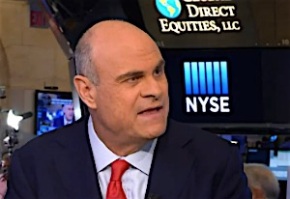Jamie Salafia promoted in TEM segment of Voya institutional
Voya has named Jamie Salafia its new director of Consultant Relations for the Tax-Exempt Markets (TEM) segment of Voya Financial’s Retirement business. He will be based in Windsor, CT, and report to Gregg Holgate, senior vice president, Institutional Clients, for Voya’s TEM sales team.
Salafia, who had been the TEM marketing segment director, will be responsible for developing relationships with consultants serving large state and municipal governments, school systems, hospitals, healthcare facilities and non-profits. He is a registered representative with Series 6, 26 and 63 licenses.
Before joining Voya in 2015, Salafia was a retirement education consultant at Prudential Retirement and an assistant vice president of marketing at Phoenix Wealth Management. He is a U.S. Air Force veteran.
MassMutual to gather data with Medallia software
Massachusetts Mutual Life Insurance Co. (MassMutual) has selected Medallia, a developer of customer experience management (CEM) software, to provide the insurer with new customer feedback and response program.
“Built on a data analytics platform, Medallia’s enterprise SaaS CEM solution enables MassMutual’s employees to gather, analyze and act on customer feedback in real time to continuously improve the company’s performance as well as the customer experience,” a MassMutual release said.
The new customer experience management system will allow MassMutual to gather feedback from its 35,000 retirement plan sponsors, three million participants and more than 5,100 advisors and third-party administrators (TPAs). Customers will be asked to evaluate their experiences.
Founded in 2001, Medallia has offices in Silicon Valley, New York, London, Paris, Hong Kong, Sydney and Buenos Aires.
Frustration expressed at aging summit
A big gap exists between what academics know about likely changes in global demographics over the next 35 years and the ability of governments, companies and individuals to prepare for those changes.
That was the concensus reached by 42 experts on population, economics, migration, geopolitics, financial planning, business strategy at the Tenth World Demographic and Ageing Forum, held in St. Gallen, Switzerland, from August 29 to 31.
The WDA Forum identified four priorities for change in preparation for declining fertility in developed countries and increasing fertility in sub-Saharan Africa:
- Altering government, employer, individual behaviours, policies and practices for flexible retirement aligned with flexible working lives.
- Improving the integration of new migrants in western societies
- Rethinking education, at a personal level as well as in public policy, to facilitate life-long education
- Investing in education in sub-Saharan Africa and South Asia, especially of women, not least to reduce fertility rates
A statement released after the conference said:
“We know that the share of populations in developed countries that is over 65 is rising rapidly, as we live longer lives and have fewer children, and that China, other emerging markets and virtually all nations as they modernize are following the same path.
“We know that the population of sub-Saharan Africa promises to double or even triple during this century unless fertility rates are brought down. We know that despite arguably more favorable demographics than other Western countries the US labor force is seeing millions of males give up looking for work.
“We know that civil wars and other political and economic instability are causing substantial flows of migrants. We know that in Europe, skilled immigrants are needed for economic reasons but not wanted by many voters.
“Action, to adjust our views of working lives, to alter business practices towards older people, to integrate migrants, to alter pension entitlements and retirement ages to make them affordable, to deal with the many trade-offs in public policy that favor short-term responses over longer term measures—all is proving surprisingly hard to achieve.
“The critical priority must be to accelerate action in response to and in preparation for the dramatic demographic changes that are arriving. Above all, the Forum concluded, we as individuals need to change the way in which we think about old age. When we are 75 or 80 years, will we be rebels? Or conservatives? Or try to control our ageing? Or will we try to be ageless, eternal?”
The WDA Forum is a think tank established in 2002 and based in St. Gallen. It works closely with the Institute of Insurance Economics at the University of St. Gallen as well as other educational and research institutions including the Harvard T.H. Chan School of Public Health in Boston, Stanford University in California and Fudan University in Shanghai.
Ameritas buys The Guardian’s 401(k) business
Ameritas Life has completed its purchase of the 401(k) plan business of The Guardian Insurance & Annuity Company, Inc. (GIAC), a unit of The Guardian Life Insurance Company of America, Lincoln, Nebraska-based Ameritas reported.
The transaction increases the assets under administration of Ameritas retirement plans division to more than $10 billion, serving 6,000 businesses and public entities that range from sole proprietorships to large corporate, non-profit and government employers.
Ameritas Life Insurance Corp. and its affiliated companies provide life insurance, annuities, group health insurance, individual disability income insurance, retirement plans, investments and public finance. Securities and investment advisory services offered through affiliate Ameritas Investment Corp., member FINRA/SIPC.
The Guardian Life, a mutual company founded in 1860, had $7.3 billion in capital and $1.5 billion in operating income (before taxes and dividends to policyholders) in 2015. The company employs about 8,000, including over 3,000 financial representatives in more than 70 agencies nationwide.
Address change for sponsor of RMEF, a retirement industry group
Diversified Services Group, Inc., which sponsors the twice-yearly Retirement Management Executive Forum, has a new address: 175 Strafford Avenue, Suite One, Wayne, Pa., 19087-3396.
DSG offers retirement market consulting, research, and business planning services to insurance companies, investment management firms and mutual funds, banks, and distributors of financial products.
Through a series of syndicated and proprietary retirement market research projects (RM2 Reports) and a partnership with Greenwald & Associates, DSG helps financial services companies better understand the needs of retirees. It is currently conducting its 4th annual syndicated “Retiree Insights” Study. A new multi-sponsor Retirement Income Products research initiative is planned for later this fall.
Established in 2003, DSG’s Retirement Management Executive Forum (RMEF) allows retirement market business executives to meet and discuss the retirement income market opportunity and relevant market issues. The next RMEF is scheduled for December 7th and 8th.
TIAA to replace passwords with voiceprints
In a technology upgrade that can eliminate traditional passwords, PINs and account numbers, TIAA has launched “voice biometric authentication,” a digital technology that lets TIAA clients create “voiceprints” to securely identify themselves when speaking to a customer representative, transferring funds or checking account balances.
When customers sign up for this service, the system will capture their unique voiceprint. By using their secure vocal password, customers will be able to skip many of the various authentication steps used today. The system can detect and safeguard against voice recordings, according to a TIAA (formerly TIAA-CREF) release.
Voice biometrics is now available to most TIAA retirement participants.
© 2016 RIJ Publishing LLC. All rights reserved.










